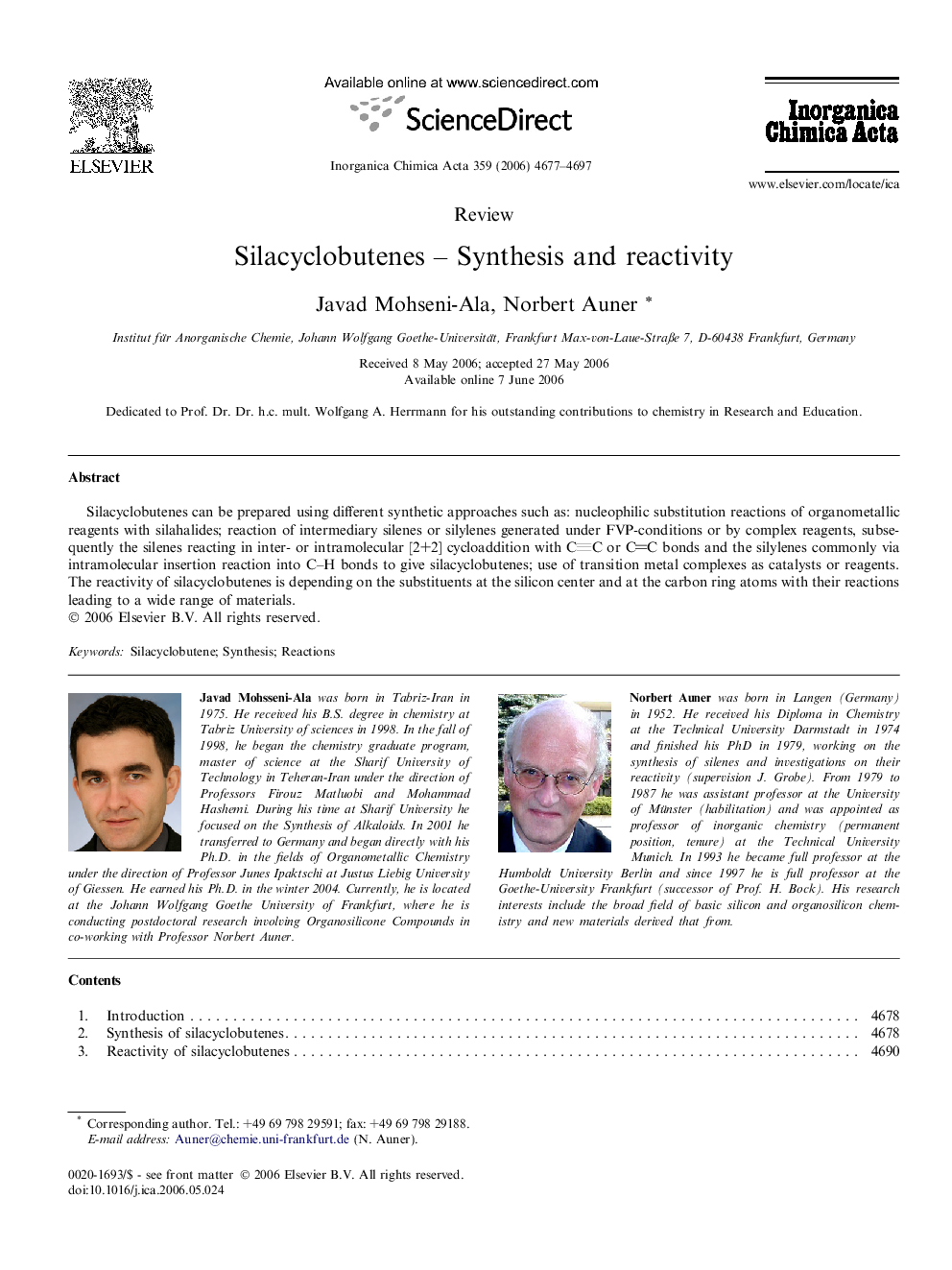| کد مقاله | کد نشریه | سال انتشار | مقاله انگلیسی | نسخه تمام متن |
|---|---|---|---|---|
| 1310941 | 975268 | 2006 | 21 صفحه PDF | دانلود رایگان |

Silacyclobutenes can be prepared using different synthetic approaches such as: nucleophilic substitution reactions of organometallic reagents with silahalides; reaction of intermediary silenes or silylenes generated under FVP-conditions or by complex reagents, subsequently the silenes reacting in inter- or intramolecular [2+2] cycloaddition with CC or CC bonds and the silylenes commonly via intramolecular insertion reaction into C–H bonds to give silacyclobutenes; use of transition metal complexes as catalysts or reagents. The reactivity of silacyclobutenes is depending on the substituents at the silicon center and at the carbon ring atoms with their reactions leading to a wide range of materials.
Silacyclobutenes can be prepared using different synthetic approaches such as: nucleophilic substitution reactions of organometallic reagents with silahalides; reaction of intermediary silenes or silylenes generated under FVP-conditions or by complex reagents, subsequently the silenes reacting in inter- or intramolecular [2+2] cycloaddition with CC or CC bonds and the silylenes commonly via intramolecular insertion reaction into C–H bonds to give silacyclobutenes; use of transition metal complexes as catalysts or reagents. The reactivity of silacyclobutenes is depending on the substituents at the silicon center and at the carbon ring atoms with their reactions leading to a wide range of materials.Figure optionsDownload as PowerPoint slide
Journal: Inorganica Chimica Acta - Volume 359, Issue 15, 1 December 2006, Pages 4677–4697